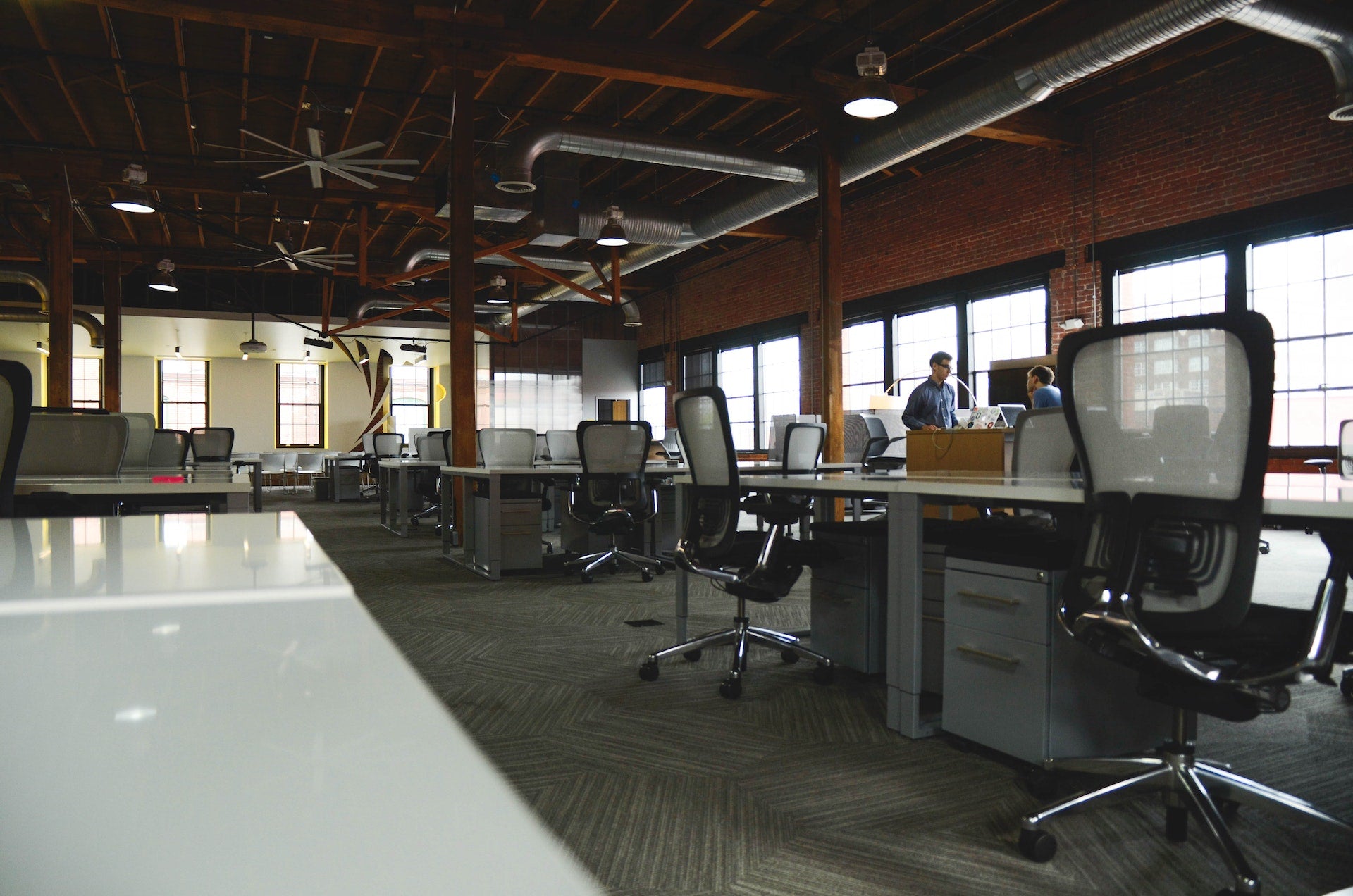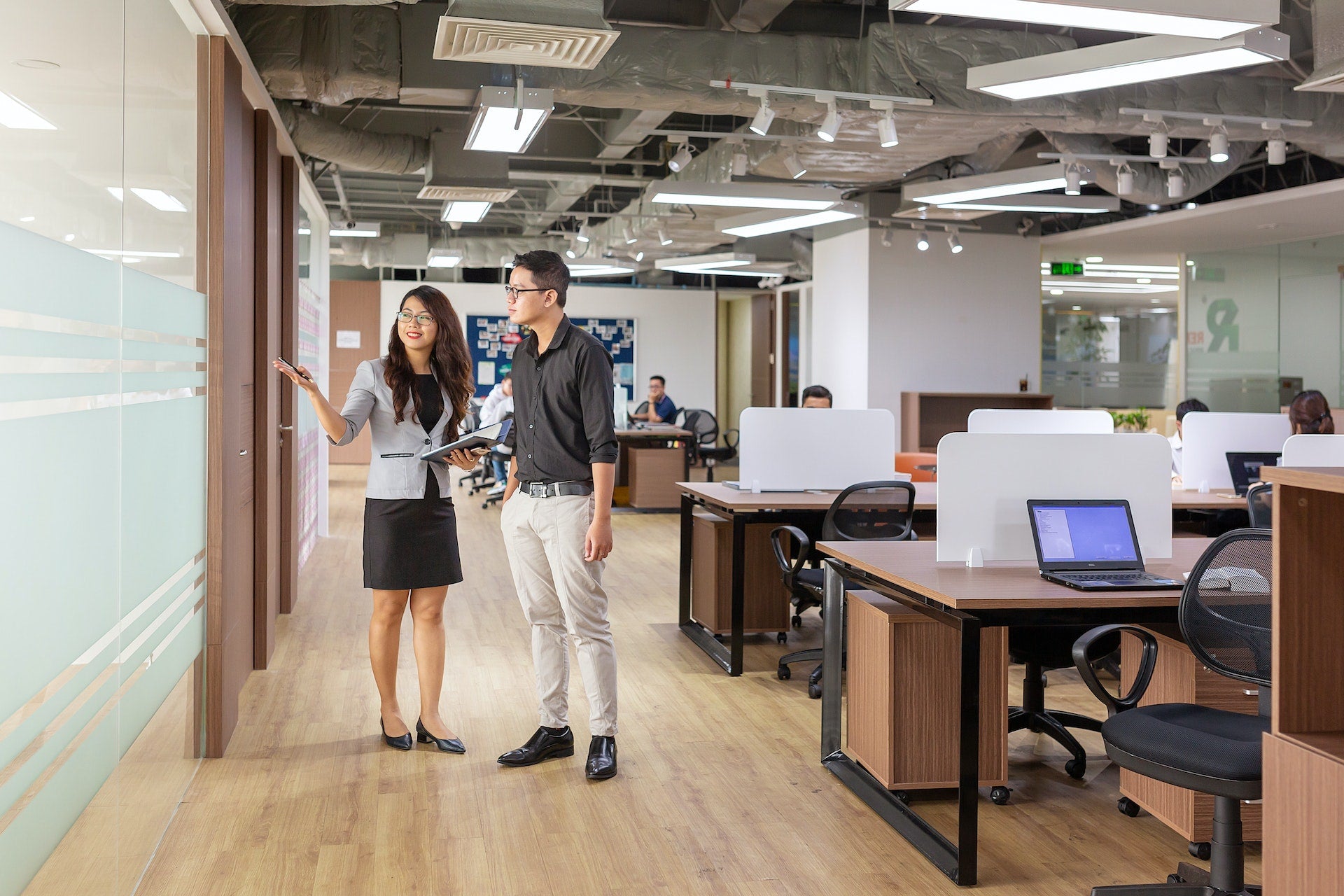Exploring the Evolution and Importance of Office Desks in the Modern Workplace


In the fast-paced world of modern business, the workplace has undergone significant transformations. From open-plan offices to remote work, the way we work has evolved drastically.
However, one element that has remained a constant in the office landscape is the office desk. While the basic concept of a desk may seem unchanging, the evolution of office desks in the modern workplace is a fascinating journey.
This article delves into the history, evolution, and the importance of office desks in contemporary office environments.
A Brief History of Office Desks
Office desks, in some form, have been a part of human workspaces for centuries. Their evolution closely mirrors the changing nature of work and society. Let's take a quick look at the history of office desks to understand how they have evolved over time.
Ancient Origins
The concept of using a flat surface for writing or working can be traced back to ancient civilizations. In ancient Egypt, scribes used stone slabs as a writing surface, precursor to modern desks. Similarly, in ancient Greece and Rome, scholars and administrators used lecterns or simple tables to perform various tasks.
Medieval and Renaissance Period
Desks as we know them today started to take shape during the medieval and Renaissance periods. These desks were often large and ornate, intended for use by scholars and scribes. They were frequently made from expensive materials like oak or walnut and featured intricate carvings.
Industrial Revolution
The Industrial Revolution brought about significant changes in the workplace, including the design and use of office desks. With the rise of clerical jobs, desks became more utilitarian and functional. The famous roll-top desk, which allowed clerks to securely store their work, gained popularity during this time.
Mid-20th Century
The mid-20th century saw the emergence of modern office furniture design, characterized by clean lines and practicality. Iconic pieces like the Eames Desk Chair and the modern pedestal desk were introduced during this period. These designs laid the foundation for the sleek and functional office desks we see today.

The Evolution of Office Desks in the Modern Workplace
The modern workplace has changed dramatically over the last few decades. The evolution of office desks has closely followed these changes. Let's explore how office desks have evolved in response to the shifting needs of the modern workplace.
Traditional Cubicles and Private Offices
In the mid-20th century, traditional cubicles and private offices were the dominant office layout. The desks in these settings were often large, with built-in storage, and provided employees with a dedicated workspace. These desks were designed for focused, individual work.
Open-Plan Offices
As businesses sought to encourage collaboration and communication among employees, open-plan offices gained popularity in the 1980s and 1990s. In open-plan offices, desks are typically arranged in rows or clusters, without dividing walls. This design was intended to promote interaction, but it also reduced privacy and the sense of personal space.
Ergonomic Design
The late 20th century and early 21st century brought a growing emphasis on ergonomics in office desk design. The importance of employee well-being and comfort became more widely recognized. Ergonomic office desks were designed to support better posture, reduce strain, and increase productivity. Adjustable desks, standing desks, and ergonomic chairs became staples in modern workplaces.
Hot Desking and Activity-Based Workspaces
With the rise of remote work and the gig economy, the concept of a dedicated desk for each employee began to shift. Hot desking, which allows employees to use any available desk on a first-come, first-served basis, became popular. This approach aimed to maximize office space and accommodate a dynamic, ever-changing workforce.
The Remote Work Revolution
The COVID-19 pandemic in 2020 accelerated the adoption of remote work. As employees transitioned to working from home, the importance of the office desk was questioned. Some companies reduced office space, while others focused on creating more comfortable home office setups for their employees. Office desk design shifted to accommodate the needs of remote workers.

The Importance of Office Desks in the Modern Workplace
In an era of constant change and flexibility, office desks remain a crucial element in the modern workplace. Here are several reasons why office desks continue to be of paramount importance:
1. A Dedicated Workspace
Even in the age of remote work and hot desking, many employees still need a dedicated workspace. An office desk provides a designated area where employees can focus on their tasks and responsibilities. Having a dedicated desk can contribute to a sense of structure and routine, which can boost productivity.
2. Ergonomic Support
The importance of ergonomic design cannot be overstated. A well-designed office desk and chair can significantly impact an employee's comfort and well-being. Proper ergonomics reduce the risk of musculoskeletal disorders, enhance productivity, and contribute to long-term health.
3. Organizational Efficiency
Office desks are essential for organizing work-related materials. Drawers, shelves, and storage compartments help employees keep their workspaces tidy and organized. This, in turn, reduces clutter and enhances efficiency. Organized workspaces promote better time management and help employees stay on top of their tasks.
4. Collaboration and Communication
While the nature of work may have evolved, collaboration remains a cornerstone of many modern workplaces. Office desks in open-plan offices or collaborative spaces provide a space for employees to work together on projects and exchange ideas. The layout and design of these desks can either facilitate or hinder effective collaboration.
5. Brand Identity
The design of office desks and workspaces can contribute to a company's brand identity. It reflects the company's culture, values, and image. A well-designed workspace can attract and retain talent, impress clients, and create a positive work environment that reinforces the company's brand.
6. Flexibility
Modern office desks are designed to be flexible. They can be adjusted to accommodate different work styles and tasks. For example, sit-stand desks allow employees to switch between sitting and standing, promoting movement and reducing the negative health effects of prolonged sitting. This adaptability is vital in a rapidly changing work environment.
7. Employee Well-Being
Employee well-being has become a central concern for businesses in recent years. A comfortable and well-equipped office desk is essential for promoting employee well-being. It helps reduce stress, improves focus, and fosters a positive work environment.
8. Technology Integration
In today's workplaces, technology is a vital part of daily operations. Office desks are designed to integrate technology seamlessly. Cable management, built-in power outlets, and adjustable monitor stands are some features that help employees connect and work with their devices efficiently.
9. Security
In workplaces where sensitive information is handled, office desks play a role in security. Desks with locking drawers and compartments help protect confidential documents and equipment. Security measures are crucial in industries such as finance, healthcare, and legal services.
10. A Sense of Ownership
Having a personal workspace, even in open-plan offices or hot desking setups, can instill a sense of ownership and belonging in employees. Personalizing one's desk can create a sense of identity and pride in one's work.
11. Compliance and Regulations
In certain industries, specific regulations and standards require the use of certain types of office furniture, including desks. Compliance with these regulations is essential for legal and safety reasons.

Trends in Modern Office Desk Design
To meet the evolving needs of the modern workplace, office desk design has continued to adapt. Several trends have emerged in response to these changing demands:
1. Sit-Stand Desks
The sit-stand desk, also known as a height-adjustable desk, has gained popularity due to its health benefits. Employees can switch between sitting and standing positions, reducing the risks associated with prolonged sitting.
2. Minimalist Design
Minimalism is a prevailing trend in office desk design. Simple, clean lines and neutral color palettes are favored to create uncluttered workspaces. This design choice not only looks sleek but also promotes focus and productivity.
3. Sustainable Materials
Sustainability has become a primary consideration in furniture design. Office desks made from sustainable materials, such as recycled wood and metal, are eco-friendly and align with a company's commitment to environmental responsibility.
4. Modular Furniture
Modular office desks and workstations are highly adaptable. They allow companies to reconfigure their office layouts easily to meet changing needs. Modular pieces can be added, removed, or rearranged as required.
5. Technology Integration
With the increasing reliance on technology, desks are being designed to accommodate modern gadgets. This includes integrated charging stations, cable management systems, and smart features that connect with other office equipment.
6. Customization
Personalization and customization are highly valued in modern office desk design. Employees often have the opportunity to choose finishes, materials, and accessories for their desks, allowing them to create a workspace that suits their preferences.
7. Collaborative Spaces
Collaborative desks and workstations are designed for team-based work. They often include built-in whiteboards, monitor stands, and cable management systems to facilitate group projects and brainstorming sessions.
8. Agile and Flexible Workspaces
The design of office desks is increasingly focused on adaptability and mobility. Many desks are now equipped with wheels, allowing employees to easily rearrange their workspace to meet the needs of the moment.
The office desk, a seemingly ordinary piece of furniture, has gone through a remarkable evolution over the years. From its ancient origins to its place in the modern workplace, the desk has adapted to reflect the changing nature of work and the needs of employees.
In today's dynamic work environments, the importance of office desks cannot be overstated. They provide dedicated workspaces, promote ergonomics and well-being, enhance organization and efficiency, and support collaboration and communication. Moreover, they contribute to brand identity, security, and compliance, while also giving employees a sense of ownership.
Office desk design continues to evolve in response to the changing needs of the modern workplace. Trends like sit-stand desks, minimalist design, sustainability, and technology integration have reshaped the way we perceive and use this essential piece of office furniture.
As the workplace continues to evolve, so too will the office desk, ensuring that it remains a vital and adaptable component of the modern work environment. Whether in a traditional office, an open-plan workspace, or a home office, the office desk remains a symbol of productivity, focus, and comfort in the ever-changing world of work.
